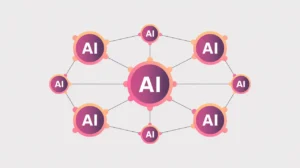Importance of Topic Modeling
Topic modeling is a technique in Artificial Intelligence and data science that automatically identifies themes or topics within large collections of text. Its importance today lies in the sheer scale of unstructured information produced across emails, social media, reports, and online platforms. Topic modeling helps reveal patterns that might otherwise remain hidden, turning messy text into organized clusters of meaning.
For social innovation and international development, topic modeling matters because organizations often work with massive amounts of qualitative data. From analyzing citizen surveys to scanning academic literature, the ability to surface themes quickly allows decision-makers to focus on what is most relevant. This makes topic modeling a practical bridge between raw information and actionable insights.
Definition and Key Features
Topic modeling refers to a set of unsupervised learning techniques that group words and documents into clusters representing latent themes. Popular methods include Latent Dirichlet Allocation (LDA), which models documents as mixtures of topics, and Non-Negative Matrix Factorization (NMF), which uses linear algebra to identify patterns in word usage. These approaches rely on statistical co-occurrence of words to infer which topics are likely present.
It is not the same as keyword extraction, which identifies frequent terms without organizing them into themes. Nor is it equivalent to sentiment analysis, which evaluates emotional tone. Topic modeling specifically aims to uncover the structure of themes across a large text corpus, providing a high-level map of content.
How this Works in Practice
In practice, topic modeling involves preprocessing text, removing stopwords, normalizing words, and creating a document-term matrix. Algorithms then detect patterns of co-occurrence and assign probabilities of topics to documents. The results typically show a list of topics defined by top words, along with distributions indicating how strongly each document belongs to each topic.
Challenges include interpretability, since topics are statistical constructs that may not always align neatly with human-defined categories. Results can also vary depending on preprocessing choices and the number of topics selected. Advances in neural topic models and embeddings are improving accuracy and making outputs more meaningful, especially when combined with visualization tools for exploration.
Implications for Social Innovators
Topic modeling provides mission-driven organizations with a way to make sense of unstructured text at scale. Civil society groups use it to analyze public consultations and detect recurring community concerns. Humanitarian organizations apply it to categorize field reports, speeding up crisis analysis. Education initiatives use it to scan research literature and identify emerging areas of focus.
By surfacing patterns and themes from large volumes of text, topic modeling equips organizations with a clearer understanding of stakeholder voices and emerging issues, strengthening evidence-based decision-making.







